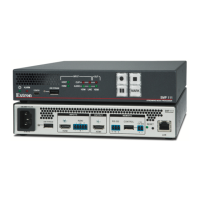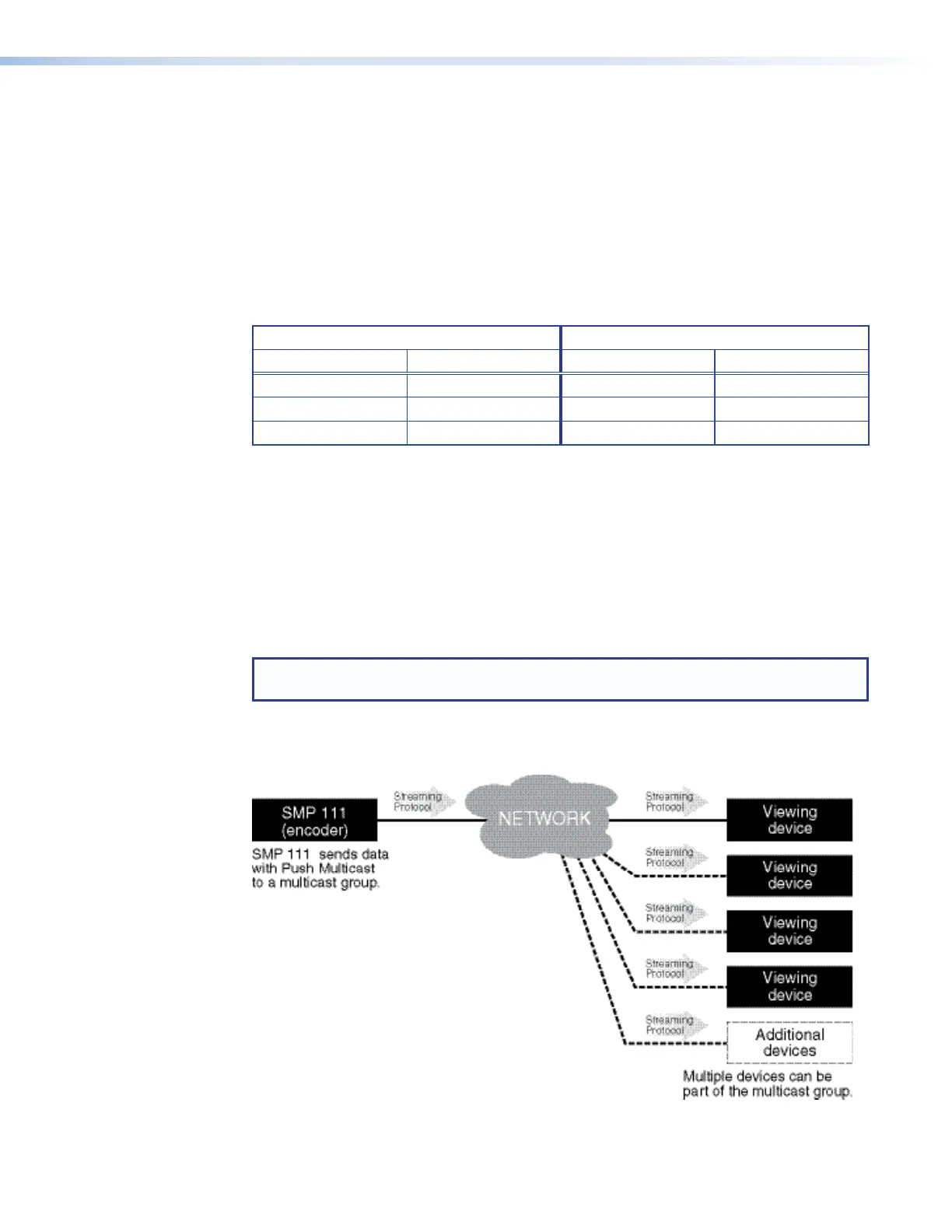SMP111 • Reference Information 99
Streaming Method Overview
The streaming method used by the SMP111 should be considered carefully. Multicast is
typically used for live multicasting a "one‑to‑many" session when it is known there will be
multiple viewers of a stream. Unicast streaming is used for on‑demand video where the
network infrastructure does not support multicast traffic. Typically, unicast streaming is used
for a point‑to‑point (one‑to‑one) connection.
Protocols Used for Streaming
Streaming protocols must be selected based on the streaming method and the SMP111
capability. The following transport layer protocols can be used for SMP streaming.
Pull Push
Unicast Multicast Unicast Multicast
RTP (RTP over UDP) RTP (RTP over UDP) TS/UDP TS/UDP
TS/RTP TS/RTP
ES/RTP (Native RTP) ES/RTP (Native RTP)
The transport protocols are summarized in this section. For information on how to change
the SMP111 transport protocol, see Streaming and Recording on page 19.
Multicast Streaming Method — An Overview
This streaming method is used for live video multicasting with low latency in a
"one‑to‑many" streaming session. The SMP111 uses a variety of streaming protocols to
send data to a multicast group. Using multicasting, the SMP111 does not need to know
the IP address of the devices viewing the stream. This allows a large number of users to
view the data simultaneously while using bandwidth efficiently. The maximum number of
connected users is dependent on the type of distribution network used.
NOTE: To use this streaming method, each network must be configured to pass
multicast broadcasts.
Multicast streaming can use push or pull streaming. It can push the data to a network for
broader distribution, or to many individual viewing devices. It can also use pull streaming,
where the SMP111 waits for viewing devices to request the stream before broadcasting.
Figure 66. Multicast Streaming
figure 66

